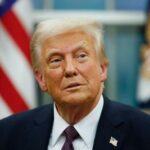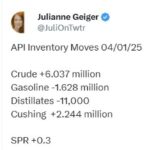
Navigating Political Turmoil: Assessing the U.S. Administration’s Recent Achievements
Tháng 4 1, 2025
Navigating the Uncertainty: Recent Trends in U.S. Crude Oil Inventories
Tháng 4 1, 2025Tariff Fears Weigh on Currency Markets: Recent Developments and Implications
In the fast-paced world of Forex trading, recent tariff concerns have emerged as a significant factor affecting the currency markets. As President Trump’s administration navigates the complex landscape of international trade, the implications of potential tariffs loom large, generating both uncertainty and volatility across global financial platforms.
Ongoing Tariff Concerns and Their Impact
In recent weeks, the discussions surrounding tariffs, particularly those proposed by the U.S. government, have sparked widespread debate and apprehension among investors. President Trump has indicated a level of flexibility in his tariff strategy, suggesting that there may be room for negotiation and adjustment. However, with the April 2nd deadline for reciprocal tariffs approaching, many traders remain cautious. The looming threat of tariffs has led to fluctuating market conditions that can severely impact currency valuations and investor sentiment.
For a deeper understanding of how international trade dynamics influence investor sentiment, consider the insights shared in China’s President Xi Jinping addresses U.S.-China trade tensions. You can read more about this here.
Market Reactions: Currencies and Risk Appetite
Despite the optimistic rhetoric regarding tariffs, financial markets have experienced considerable turmoil, resulting in a marked sell-off in equity markets. Interestingly, during these downturns, the U.S. dollar—a currency typically viewed as a safe haven—has struggled to assert strength. This phenomenon indicates a significant degree of uncertainty, with traders hesitant to fully trust U.S. economic stability amid evolving tariff discussions. The prevailing challenges facing the dollar reveal a broader skepticism about its reliability as a safe harbor during periods of market unrest.
Central Bank Decisions and Economic Indicators
The role of central banks cannot be underestimated in the current market landscape. The Reserve Bank of Australia (RBA) recently opted to maintain its key interest rates at 4.10%, a decision that aligns with market expectations. However, inflation trends are critical, as they could influence monetary policy across various jurisdictions. Notably, the Eurozone’s Consumer Price Index (CPI) came in softer than analysts anticipated, instigating speculation about potential rate cuts by the European Central Bank (ECB). As central banks react to shifting economic indicators, traders will need to stay vigilant regarding these decisions that can significantly sway currency valuations.
To better navigate the intricate relationships between tariffs and currency pairs like the Euro and U.S. dollar, it’s beneficial to refer to detailed analyses available on trading strategies. One such analysis is focused on the EUR/USD currency pair, which showcases the impact of ongoing economic conditions and market sentiments. You can explore this here.
Global Trade Dynamics and Investor Sentiment
As global trade relations grow increasingly complex, the European Union has signaled its intention to consider retaliatory measures against U.S. tech companies in response to the proposed tariffs. This tit-for-tat backdrop makes it essential for Forex traders to stay updated on governmental policies and their potential ramifications. The U.S. administration continues to draft various tariff proposals, yet no conclusive decisions have been made, further fueling the prevailing uncertainty that continues to reverberate through currency markets.
In summary, the interplay between tariff anxieties and market responses encapsulates the current Forex trading environment. With ongoing unpredictability surrounding international trade policies and a fluctuating economic outlook, traders must navigate these turbulent waters with caution, leveraging insights to inform their investment strategies. As the April deadline looms, all eyes will be on the economic indicators and central bank communications that will undoubtedly shape the future trajectory of global currency markets.

